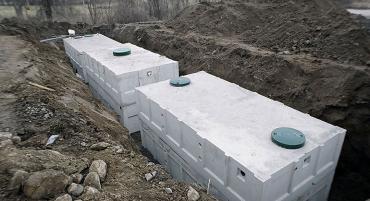
Two Treasure Coast lawmakers are teaming up with the Florida Chamber of Commerce to help lessen septic tank runoff to the Indian River Lagoon in hopes of paving a way to cleaner water for Florida’s Treasure and Space Coasts -- and they're joined by the Florida Chamber of Commerce and an expert who all say septic-to-sewer conversion is the key to cleaning Florida's waterways.
The Chamber unveiled a video highlighting new research from Florida Atlantic University's Harbor Branch Oceanographic Institute research professor and marine biologist Brian Lapointe in Tallahassee on Wednesday. Lapointe has said the runoff -- both agricultural and urban -- plus sewage top the list of culprits responsible for problems plaguing the Indian River Lagoon.
The new video, part of a series, is just one aspect of a $90,000 partnership grant between the Chamber and Lapointe. The grant period runs to Dec. 31.
Florida has a big problem on its hands with excess nutrients and sewage in riverways and waterways. Most waters have some sewage problems, but sewage is a particularly large problem in the Indian River Lagoon.
Every year more than 4.4 million pounds of nitrogen from upwards of 600,000 septic tanks leaching into tidal creeks and canals wind up in the 156-mile Indian River Lagoon.
Aging septic tanks and human pollution, Lapointe says, are the number-one causes of pollution in Florida waterways.
Lapointe would know. He’s spent decades researching what’s ailing Florida’s waterways, studying water from the Florida Keys all the way up the coast of Florida.
“The evidence is undeniable. We have detected a large amount of fecal cauliform, bacteria and traces of chemicals found exclusively in humans,” Lapointe said Wednesday.
Reps. Gayle Harrell, R-Stuart, and Sen. Debbie Mayfield, R-Vero Beach, used Wednesday’s press conference to highlight a new legislative proposal to pump funding into Legacy Florida 2.0, which would provide up to $50 million for water projects in the Indian River Lagoon.
“What we really need to do is continue the work we began several years ago,” Harrell said, referring to the passage of the first Legacy Florida bill, which provided $135 million for springs restoration.
“Legacy Florida really set the course for where we are going now,” the Stuart representative said.
Legacy Florida 2.0 will take funding sources through Amendment 1 funds to move projects restoring the Indian River Lagoon.
Local runoff projects and septic-to-sewer conversion would be included in the measure, which would require a 50-50 match from the government so local entities can parlay local resources with state resources.
Lapointe said septic-to-sewer conversion tactics would be one of the most effective ways to fight back against water pollution.
Mayfield agreed, adding she hoped the legislation would make the conversions a reality.
“We have a water quality issue throughout the state of Florida,” Mayfield said. “You can’t just throw money at this issue and fix it overnight. But without the dedicated funding sources...this will make sure that we have money to do those septic-to-sewer conversions.”
Representatives from the Florida Chamber seemed supportive of Harrell and Mayfield’s push to give more money for septic tank conversion efforts and were hopeful Lapointe’s research would help turn the tide to get Florida waters clean once more.
“Dr. Brian Lapointe’s scientific research shows that septic tank sewage nitrogen is a smoking gun that threatens many of Florida’s waterways, including the Indian River Lagoon,” said Mark Wilson, President and CEO of the Florida Chamber of Commerce. “At the Florida Chamber, we remain committed to Florida’s environment, and look forward to sharing Dr. Lapointe’s research and further securing Florida’s water future.”
Reach reporter Allison Nielsen by email at allison@sunshinestatenews.com or follow her on Twitter: @AllisonNielsen.


